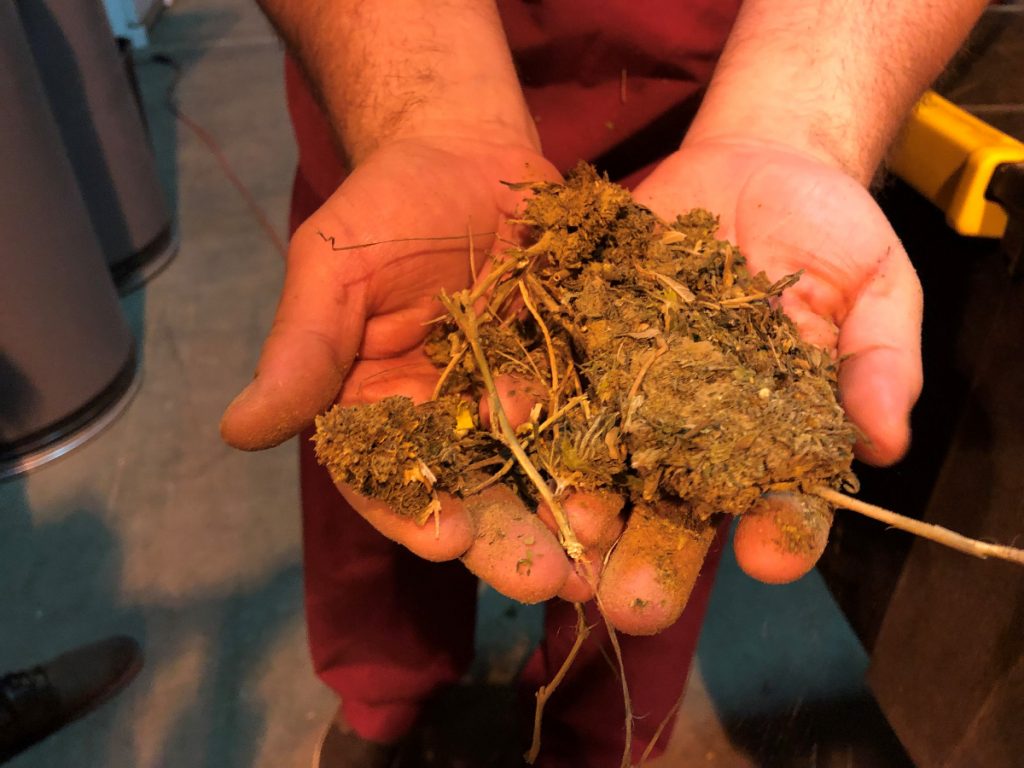Opinion: Hope is not a strategy, so stop tolling
CBDFeaturedIndustrial Hemp NewsMarijuana Laws, Regulations, & Politics February 8, 2021 MJ Shareholders 0



(Editor’s note: This story is part of a recurring series of commentaries from professionals connected to the hemp industry. Julie Lerner is CEO of PanXchange, a commodity trading platform and benchmark price provider.)
Basing the multibillion-dollar, pie-in-the-sky forecasts for the U.S. addressable market for CBD on retail shelf prices disturbs me.
It’s as illogical as quoting the U.S. wheat market in terms of bags of flour at the supermarket. Estimating the market this way grossly distorts the market fundamentals, especially considering that with regard to cannabinoids, a little bit of hemp goes a very long way.
As the CEO of a pricing and trading platform that is highly visible across the industry, I was terrified to put our estimates out last year because it was dramatically more bearish than the general market consensus.
This year is no different. We look at supply and demand using three different methodologies, and we still lack hard data concerning sales and processing stats. But the supply chain needs forecasts to aid it in making prudent decisions for the year ahead.
Let’s start with the positive: CBD consumer packaged goods is a profitable market sector, though today, it’s far more of a high-margin, low-volume specialty market.
Still, over time, we anticipate that while some products will continue to command high premiums, the mass market will move to a much higher volume at lower consumer prices.
Even this publication, which estimated the 2020 hemp-derived CBD market at $1.9 billion, just predicted that the market would reach $6.9 billion by 2025.
Yet 2021 is a different story.
We came into the 2020 crop year with an abundance of supply from the 2019 crop year. In 2019, the farmers took the hit, with biomass prices falling 84% over six months from their high in July 2019. Since then, inventory has been building across the entire supply chain, in large part because growers chose to enter into tolling agreements.
How tolling works
There are two types of tolling agreements.
The simplest is when the grower pays $1-to $5 per pound of biomass and, in return, receives the extracted product (usually crude oil or sometimes distillate).
In other arrangements, the grower pays for tolling, but instead of receiving the product, agrees to share the profits when the processor sells the extracted product.
Tolling is an excellent way to preserve the hemp crop’s quality, especially if the product has yet to find a home. But throughout 2020, the industry quietly began stuffing these extracted products everywhere – from the farm to the processor, to the consumer packaged good white-labeler and fully integrated player.
Quoting the total addressable market for CBD products in terms of retail shelf prices is grossly distorting one key element of the hemp market.
Consider:
- PanXchange estimates that total production from 2019 to 2020 decreased from 250,000 acres to 103,000 acres. If we were to take Brightfield Group’s 2020 estimate of the CPG market at $4.7 billion, the most aggressive of analysts, the entire U.S. cannabinoid market would require only 4.4% of the 2020 biomass. This equates to only 2,819 planted acres based on PanXchange’s estimate. Using Charlotte’s Web financial statements, it seems that to reach $95 million in revenues in 2020 (equal to 2019 revenue), only 873 kilograms of distillate was needed to fulfill its entire supply chain in 2020. This amount equates to only 57 acres from the 2019 growing season.
Depending on Charlotte’s Web’s actual extraction efficiency, our estimates are likely a bit low; however, we are not that far off.
Moreover, further analysis of the company’s public data reveals that the inventory build mentioned in its financial statements may exceed 30,000 kilograms of distillate and other extracted material.
Growers, please take a moment to absorb these figures. The inventory build is real and significant that we believe it’s dangerous to grow and toll and hope the market picks up again. It will eventually, but the current inventory is staggering.
Tolling biomass to preserve quality is shrewd if you know you can’t sell it immediately. But if you do not have a buyer secured for your 2021 crop, you may want to sit this crop year out.
Otherwise, we fear that you’ll be holding that inventory for many, many months.
Julie Lerner can be reached at [email protected].
To be considered for publication as a guest columnist, please submit your request to [email protected] with the subject line “Guest Column.”
MJ Shareholders
MJShareholders.com is the largest dedicated financial network and leading corporate communications firm serving the legal cannabis industry. Our network aims to connect public marijuana companies with these focused cannabis audiences across the US and Canada that are critical for growth: Short and long term cannabis investors Active funding sources Mainstream media Business leaders Cannabis consumers










No comments so far.
Be first to leave comment below.